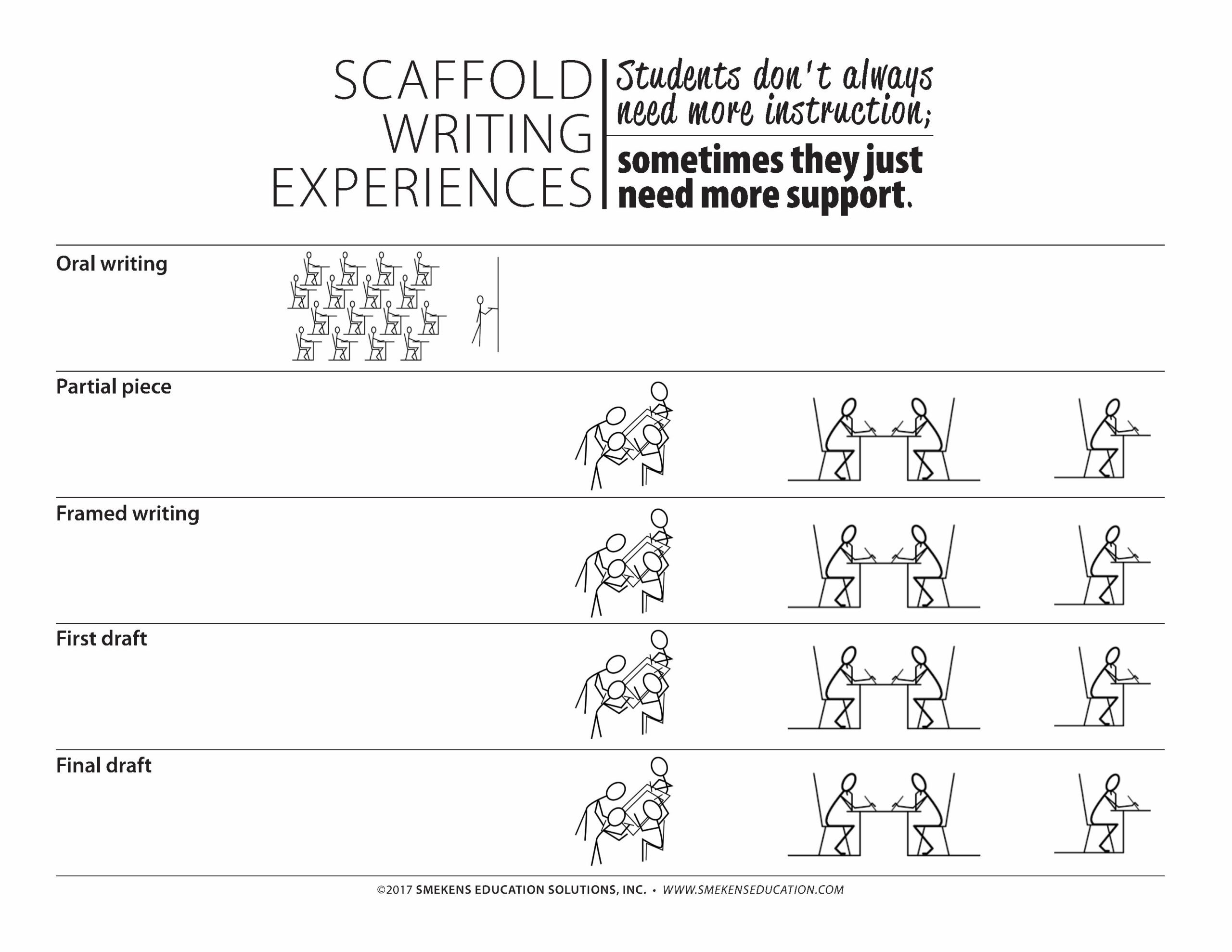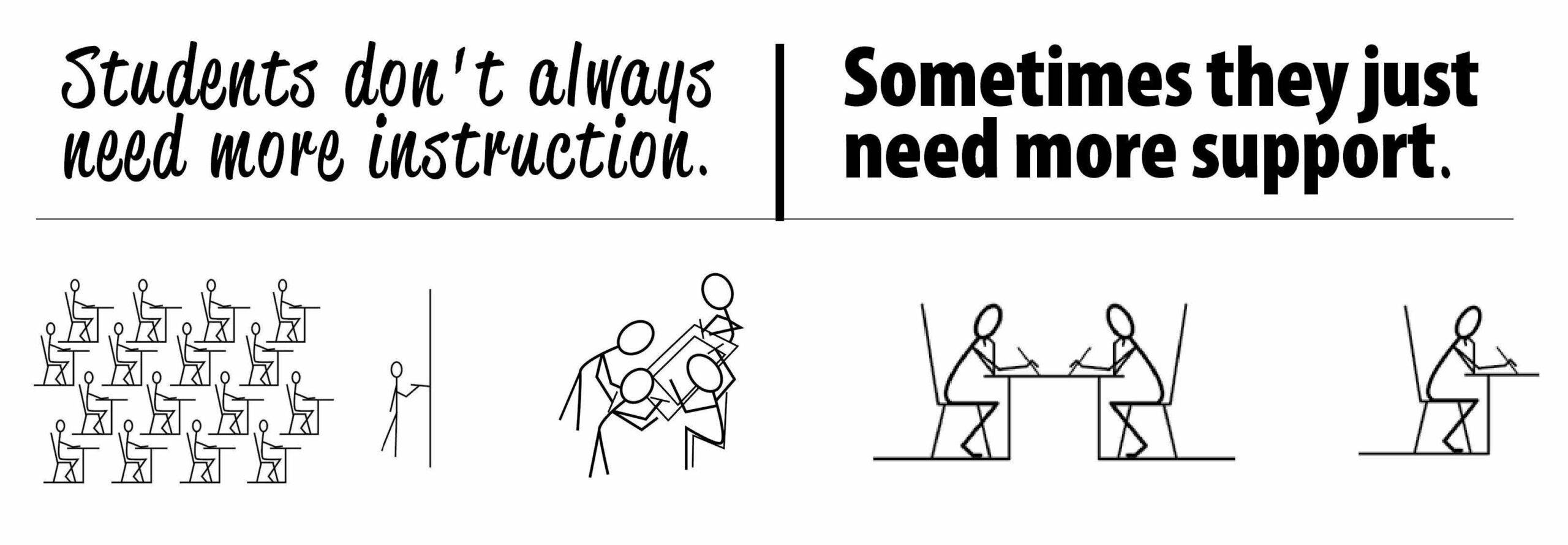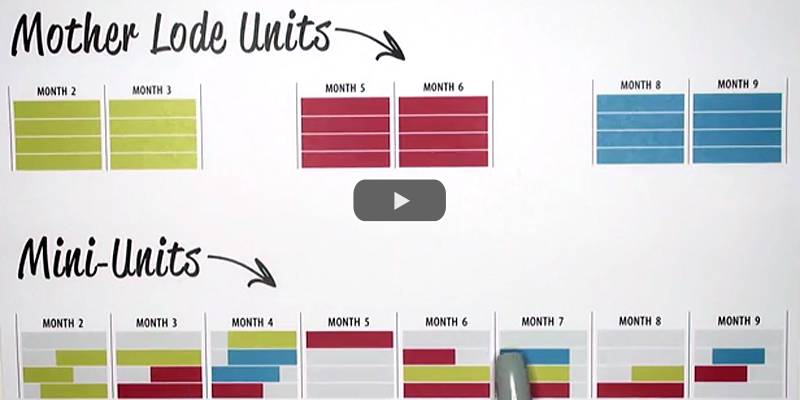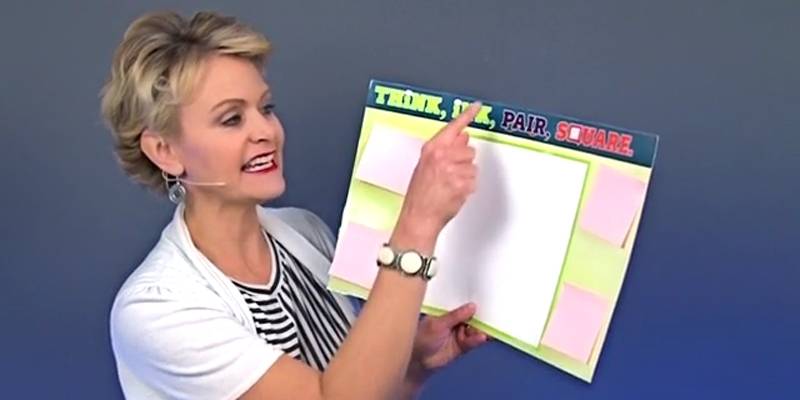Learning Center
writing
Scaffold You-do writing experiences
 Many teachers presume that students should always generate pieces that they wrote all by themselves. However, when just learning a new genre or a type of writing, it may not be appropriate to expect such a large and complete product in the first assignment.
Many teachers presume that students should always generate pieces that they wrote all by themselves. However, when just learning a new genre or a type of writing, it may not be appropriate to expect such a large and complete product in the first assignment.
Writing scaffolds serve as a means to assist students in developing their writing skills through a gradual release of responsibility. Common scaffolds for writing based around a product include oral writing, partial pieces, and framed writing, all of which provide structured opportunities for students to focus on specific aspects of the writing process. As students gain confidence, the writing scaffold is gradually decreased, enabling them to produce more independent and complete works.
Oral writing
Oral writing is an example of scaffolding that offers the most support for students. Rather than having all of the students struggle to generate their own pieces of writing, consider leading an oral writing by standing at the board or the document camera and capturing the students’ thinking for all to see. The students pool their ideas; they talk to each other and develop a whole-class product. This approach allows them to focus on the content of the message. The students put their energy into the gist of the ideas and organization of information, rather than on the mechanics of spelling, capitalization, paragraph indents, and other grammar skills.
The thinking behind such “oral writing” is that if students can’t think it to say it, then they can’t think it to write it. Scaffolded writing through conversation helps students focus on content, while easing the pressure of perfect mechanics.
Partial piece
A slightly more rigorous scaffolded writing experience would be for students to create a partial piece. These are generated after teaching several new skills for a genre—but not all of them. As a mini-unit comes to a close, the teacher assigns a new from-scratch product that includes only the known skills. These examples of partial pieces demonstrate effective scaffolds for writing:
PERSUASIVE LETTER MINI-UNIT
- 4 SKILLS TAUGHT: Follow the What-and-Why structure; Collect text details/evidence to infer reasons; “Choose” a side; State an opinion/claim.
- MINI-UNIT PRODUCT: Read provided texts on a debatable topic. Make a list of details/evidence for the differing positions. Turn in an introduction only along with the pro-con list of text details collected.
NARRATIVE MINI-UNIT
- 2 SKILLS TAUGHT: Plan the story problem first; Determine the solution second.
- MINI-UNIT PRODUCT: Study a provided photo that reveals “happy” characters in a setting or situation. Write the middle and end of a story that describes a problem they face and how they solve it. (Do not write the beginning.)
INFORMATIVE MINI-UNIT
- 3 SKILLS TAUGHT: Sequence the steps of a process; Reveal order with transitions; Develop each reason.
- MINI-UNIT PRODUCT: Use the simple list of 3 steps provided on how to go through the lunch line. Develop each reason into its own paragraph, explaining in detail how to execute it with cautions, suggestions, and adaptions. Turn in only the 3 body paragraphs; no beginning or ending.
By assigning a partial piece, students can experiment with a few skills at a time in a smaller product. They can receive feedback and additional instruction before more, new skills are layered in a future mini-unit. As new skills are rolled out, students continue producing partial pieces that include all previously-taught skills.
Framed writing
After ALL skills for a particular genre are taught, expect students to generate a complete product—but perhaps not completely from scratch. This is where a framed writing might work well. This is a set of words and phrases that serve as a skeleton or framework for the different ingredients required for a particular genre or mode of writing.
Many teachers already use frames, but don’t realize it. For example, somebody. . .wanted. . .but. . .so. . .then is a very common frame for asking students to write a narrative summary. The power of a frame is that the teacher is indicating the type of information that must be included in the written product and the organization of that information.
For example, Cinderella (Somebody) wanted to attend the ball, but her stepmother wouldn’t let her go. So, she enlisted the help of her fairy godmother. It’s then that Cinderella met Prince Charming.
Scaffolding writing with support
 Adjusting levels of support for students is another way to scaffold writing.In addition to the size and scope of the writing product, also consider the level of independence students are ready for. That oral-writing task was executed as a whole class. But a partial piece could be done alone if students are ready. If students need a little more support, consider allowing pairs or small groups of students to generate a product together. It’s not always that they need more teacher help or instruction. What they might need is more support.
Adjusting levels of support for students is another way to scaffold writing.In addition to the size and scope of the writing product, also consider the level of independence students are ready for. That oral-writing task was executed as a whole class. But a partial piece could be done alone if students are ready. If students need a little more support, consider allowing pairs or small groups of students to generate a product together. It’s not always that they need more teacher help or instruction. What they might need is more support.
When progressing through mini-units in writing, scaffold students’ experiences to honor their developmental readiness. For each assignment, pair the most appropriate writing product with a level of support that honors students’ current ability and understanding. Over time, gradually release students to be able to produce a complete first draft all by themselves.





I always appreciate the clarity in Kristina’s explanations. Thank you for thinking aloud the rationales behind each writing teaching technique.
Thank you for your kind words! Kristina’s focus on thinking aloud as she teaches teachers is a great example of how teachers can take the same technique into their own classrooms. Using a Think Aloud with your students helps them understand the process of thinking so they can apply it in many different ways beyond just the present focus.